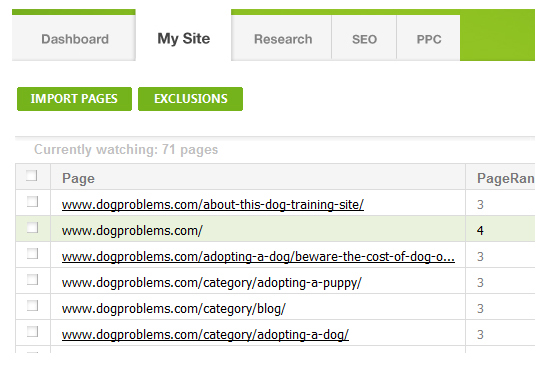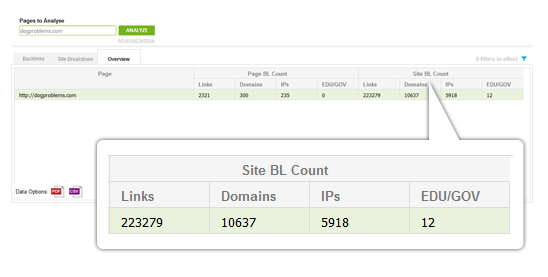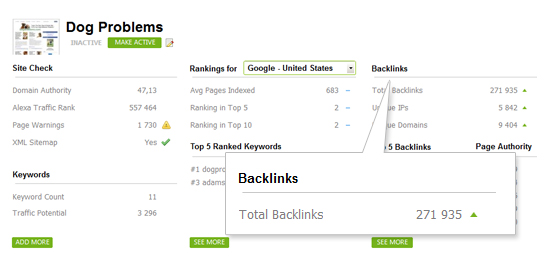WHAT
IS SEO
u NEED OF SEO
u SEARCH ENGINE
IN MARKET
u SEARCH ENGINE
MARKET SHARE
u SEO TOOLS
u SEO TECHNIQUES AND STRATEGY
u SERP
u ADVANTAGES AND DISADVANTEGES
u CONCLUSION
S E O stands for “search engine optimization.” It is the process of getting traffic from the “free,” “organic,” “editorial” or “natural” search
results on search engines.
Need Of Seo
S E O helps to ensure that
a site is accessible to a search engine and improves the
chances that the site will be found by the search engine.
It is common practice for Internet users to not click through pages and pages of search
results, so where a site ranks in a search is essential for directing more traffic
toward the site. The higher a website naturally ranks in organic
results of a search, the
greater the chance that that site will be
visited by a user.
Search Engine In Market Like
- YAHOO
- BING
- ASK
- YANDEX
Keyword selection and on-page optimization play a huge role in any SEO campaign you run, but the real key to success is your off-page SEO efforts.
While on-page SEO is a one-time thing, off-page SEO deals almost exclusively with building links to your site. This is how you get into the top spots of the search engine results and see some serious traffic.
Understanding the essential off-page SEO factors that will contribute to how well your website ranks in the search engines is vital to your success. And that's just what we're going to teach you here!
Here's some of what we'll cover:
- The number of inbound links to your site.
- The quality of the links to your site.
- The rate at which you should be buildling links.
- How to deal with anchor text.
Understanding Google PageRank
Before we get in too deep, it is important that you have an understanding of Google PageRank.
Put simply, PageRank (PR) is a way that Google measures websites.
It is based on a complex and evolving algorithm, but you don't need to worry about that. What you need to know is that in general websites with higher PageRank are deemed more 'important' than those with lower PageRank. Therefore, high PR websites often have a greater chance of outranking low PR sites in a Google search.
The easiest way to check the PageRank of your homepage is by using the Dashboard section of Traffic Travis.
Refer to the previous newsletter for more on importing pages into Traffic Travis, as well as adding a website to the Dashboard.
In the "My Site" section of Traffic Travis, you might notice that some of your pages have different PageRank, even though they are all on the same website. This is normal, as seen in the example below.

Notice it's called "PageRank" not "SiteRank." Different pages on a site will have different rankings and that is something you must be aware of when building links.
You could say that Google PageRank is a reflection of how much an individual web page is trusted by Google.
Off-Page Factors
There are literally hundreds of factors that the Google algorithms look at when ranking a page. Some are on page, some are off. And to make things even more tricky, not all factors are weighted the same.
Here are some of the most essential factors that will help your off-page SEO and boost your PageRank:
- Number of Inbound LinksBy far the biggest force behind boosting your search engine ratings is the number of other web pages that have links pointing to your website.A hyperlink to a page counts as a vote of support for that page (you can read more about links and their effect on PageRank here.) The more links you have pointing to your pages, the more "votes" you have in the eyes of Google, and, to a lesser extent, the other search engines.Traffic Travis offers a few ways of seeing the number of links pointing to your own site.The most useful way of doing this is to use the Backlinks analysis tool, which you can find under the SEO tab in Traffic Travis.It is also important that a majority of your links come from unique domains. So rather than having 100 links from Site A, you have a few from Site A, a few from Site B, Site C and so on.When you create a link in a footer, navigation menu or sidebar, it will appear on all of the pages on that website that use that template. So, you might think you're making one link, but if the site has 20,000 pages, guess what you've just done? This can affect your unique domains severely and should be monitored.To check your links, add your website or page to the "Pages to Analyze" section, click "Analyze," then when the results come up press the "Overview" button. This will allow you to see the number of links your site has in total, as well as the number of different sites those links are coming from (as well as a few other handy stats).
 In the example above, you can see that the site as a whole has 223,279 backlinks in total, coming from 10,637 different domains. It also shows that there are 12 links to the site from .edu or .gov domains — but more on that later.
In the example above, you can see that the site as a whole has 223,279 backlinks in total, coming from 10,637 different domains. It also shows that there are 12 links to the site from .edu or .gov domains — but more on that later. - Anchor Text to Specific PagesWhen you make a link, the text that appears hyperlinked is called the anchor text. For off-page SEO purposes, you want links with your keywords as anchor text.This will help search engines correctly identify what your pages are about, and know which keywords they should be ranking for.Let's say you have a page called "Labrador training tips." Ideally, you would want the links you get pointing back to this page to have anchor text like "best Labrador training tips" rather than "click here" or simply the URL of the page.In the image below you can see an example of HTML with a good anchor text link to a page, and also an example of bad anchor text link.
 The top example would show as a link to your site with the text "best Labrador training tips."While you want to target your keywords with the right anchor text, you don't always get the option to pick the anchor text you want. That is OK. There is value in a link from a good quality source no matter what the anchor text.Furthermore, even if you could, you shouldn't make all of your anchor text the same set of keywords. If ALL the links pointing to your site have the exact same anchor text, it begins to look very suspicious to search engines.Varying the anchor text is vitally important after Google's last couple of algorithm updates. You can avoid over-optimization by keeping links that have your keywords as anchor text to around 15-20 percent.For the others, you can use:
The top example would show as a link to your site with the text "best Labrador training tips."While you want to target your keywords with the right anchor text, you don't always get the option to pick the anchor text you want. That is OK. There is value in a link from a good quality source no matter what the anchor text.Furthermore, even if you could, you shouldn't make all of your anchor text the same set of keywords. If ALL the links pointing to your site have the exact same anchor text, it begins to look very suspicious to search engines.Varying the anchor text is vitally important after Google's last couple of algorithm updates. You can avoid over-optimization by keeping links that have your keywords as anchor text to around 15-20 percent.For the others, you can use:- Naked URL: e.g., http://www.traffictravis.com, www.traffictravis.com
- Brand/Business Name
- Generic calls to action: e.g., "read more" or "click here"
- Long tail keywords: e.g., "the very best dog training collar," "train your dog with this collar"
- Your personal name: This usually occurs when creating comment links
The whole point here is to make things look as natural as possible and not make it so obvious that you are trying to beat the search engines. - Quality of LinksNot all links have the same value. Quality matters.Links from well-established sites, especially ones that are considered an authority in your niche, are much more valuable than links from more obscure sites.The type of sites that are more valuable include:
- High PR websites.
- .edu or .gov websites.
- Authority sites in your niche. If you are unsure of what an authority site is, they are the bigger websites that tend to feature a lot in the search results for your chosen keywords (and related keywords).
- Sites that have been around for a long time.
- Sites that are relevant to your topic (a dog training website will be better off getting links from other sites about dogs or pets, rather sites about women's fitness).
When possible, try to use your exact keywords as anchor text with the high-quality links. You can create loads of low-quality links with varied anchor text to "disguise" your off-page SEO efforts if need be later on. - Link Building SpeedAnother important thing to take note of (alongside the number and quality of the links your site is receiving) is the rate at which your website is building links.It's good to see a green up arrow next to your backlinks count in the Dashboard section of Traffic Travis (as seen below), because this means you are building more links to your site.
 However, you don't want to build links unnaturally fast, or create a huge number in one hit and then stop.This can raise the suspicion of search engines and result in your site being penalized (especially if your site is brand new — older sites can get away with this to some extent). Search engines know what is natural and what is not. Building 10,000 low-quality links in one day when your site is 20 days old just doesn't look right.A steady link-building campaign will deliver the best results. Generally, as long as you aren't using automated tools that promise to generate thousands of links all at once, you don't need to be too worried.
However, you don't want to build links unnaturally fast, or create a huge number in one hit and then stop.This can raise the suspicion of search engines and result in your site being penalized (especially if your site is brand new — older sites can get away with this to some extent). Search engines know what is natural and what is not. Building 10,000 low-quality links in one day when your site is 20 days old just doesn't look right.A steady link-building campaign will deliver the best results. Generally, as long as you aren't using automated tools that promise to generate thousands of links all at once, you don't need to be too worried.
Recap
Off-page SEO is where it's at when you're trying to jump up the rankings. It's one of the biggest pieces of the SEO puzzle and what you will spend most of your time and resources on.
As a quick recap of what we've covered:
- Google PageRank is an indicator of the trust and importance of a site.
- In general, the more sites that link to yours, the better.
- The anchor text of the links you build is important too, and you should build links to individual pages on your site based on the keywords you are targeting.
- Building links steadily over time is the best policy.
No comments:
Post a Comment